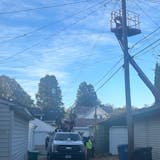When I was growing up in 1970s Burnsville, Krestwood Knolls (note the pre-Kardashian use of the K) was the neighborhood that all upwardly mobile homeowners aspired to achieve.
One of my father's favorite Sunday afternoon activities was home-gazing, and his orange Pinto station wagon (don't judge, it was the '70s) often gravitated to Krestwood Drive, where he would ooh and aah over the gussied-up ramblers, Colonials and split-levels.
Me? I would invariably ask him to detour to a very different kind of suburban enclave. The traditionalist in him didn't care for it one bit, but I dreamed that we'd trade our shag carpeted split-entry on B'ville's west side for a townhouse in stylish Birnamwood.
Now, nearly a half-century later, Birnamwood is aging better than a premium-vintage Burgundy.
It was created by Pemtom, a developer that practically invented the Twin Cities suburban townhouse landscape. Through the participation of its many forward-thinking principals — including visionary land-use expert Bob Engstrom — the company took a pioneering approach to multiunit development. Open spaces were reserved for all residents to enjoy. Rather than being bulldozed, the terrain's natural features were not only preserved but treated as marketable assets.
Pemtom tapped Stillwater architect Michael McGuire for a half-dozen of its townhouse projects.
"They got better as we went along," he said with a laugh. "The more successful they were, the more license I had."
In 1965, when the company launched Windsor Green in New Brighton, it was treading on uncharted territory. It's difficult to imagine today, but the 245-unit project was the first of its kind in the metro area. Engstrom recalls drafting the state's first home association legal documents, culled from a template from the Urban Land Institute.


